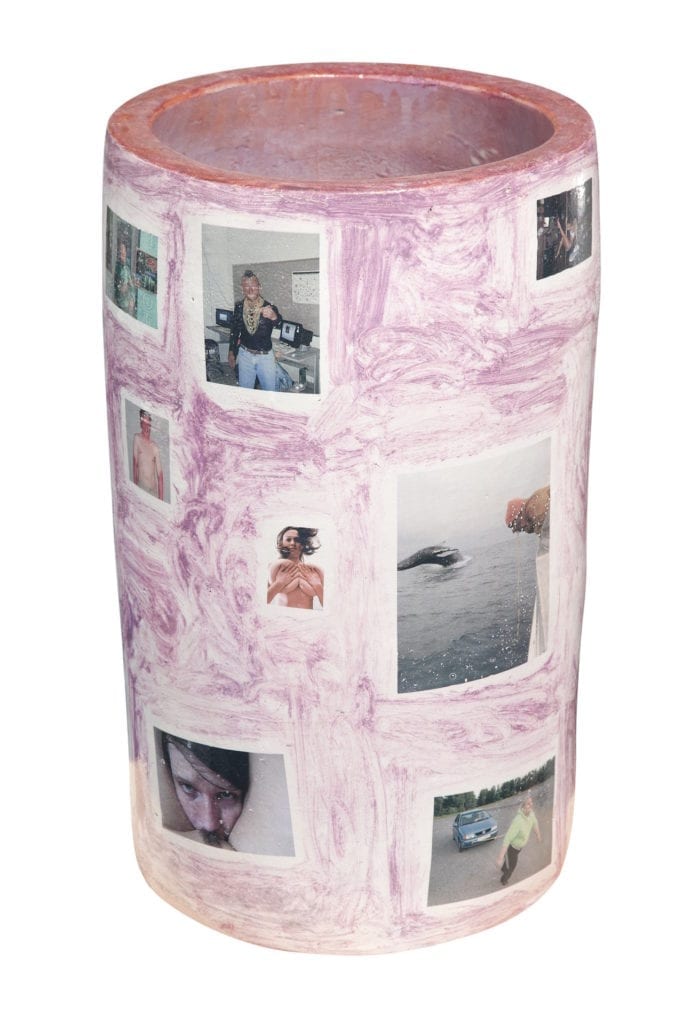We move to the longest wall of the gallery where Mailaender’s next creation will occupy the whole 17-metre length. The result of a defect from an iPhone app, the image is of Mailaender’s fingers, stretched from one end of the wall to the other.
On the opposite wall run large prints from his famous – or rather infamous – 2015 project and book, Illustrated People, for which he burnt images onto skin with an old ultraviolet lamp. Mailaender applies a negative from his archive to the body, heats it with the lamp and, hey presto, there’s a patch of red-hot, burning flesh but also a temporary photograph emblazoned on the arm, leg, back or indeed any other part of the human anatomy. Mailaender gleefully tells me that Richard Avedon did something similar when he was a child.
Remembering the tattoos that will be part of a performance on the opening night – in which people will be invited to partake in having ‘FUN’ etched on their arse cheek for the rest of their lives – I ask him if he has sadistic qualities. He laughs at the suggestion and says: “Well, you know, 50 people already have these ‘FUN’ tattoos, and when they have them done I photograph them. Often the skin is bleeding and it is a kind of punishment, but obviously just a mild one.”
Mailaender had a tattoo done on his 30th birthday and, wanting the lamest leitmotif he could think of, chose ‘FUN’. “You know, I am fed up with how photography is often shown in a frame, we should invent new ways to show it, and performance is one way of doing that,” he says.

Mailaender suggests that while I am in Düsseldorf I should pay a visit to the city’s Glasmuseum Hentrich im Museum Kunstpalast to view the exquisite ancient and antique glass collection – in particular the Persian glass dating back 2000 years ago, which is beautiful by virtue not only of its craftsmanship, but of its fragility, imperfection and array of vibrant colours.
“With my ceramic work I imagine a big photography album that is melted together like a big image soup and is then regurgitated to form what you see,” Mailaender explains, adding that he has been “working closely with a funeral craftsman to reproduce a portrait as an enamel photograph, the kind you see on gravestones”.
“This enamelled photograph will last forever. When we see Ancient Greek art we see rooms that are totally white and destroyed, but at one time they were colourful. The only colour that has survived from this time is in their ceramic works, as it lasts forever.
“I like the idea of questioning the sustainability of the photograph and applying those techniques to images from the internet that have no materiality. We will all die, so I like the idea that in 10,000 years’ time, some archaeologists will unearth my ceramics and be shocked and amused by these artifacts from the year 2017.”
It is readily apparent that Mailaender’s work is a rejection of the world we live in today, and in discussing this, we joke about Donald Trump. Mailaender thinks that his work can take on an added significance regarding this “so-called” president. “Trump is the king of nonsense and failures, though he does not know it!” he says.

